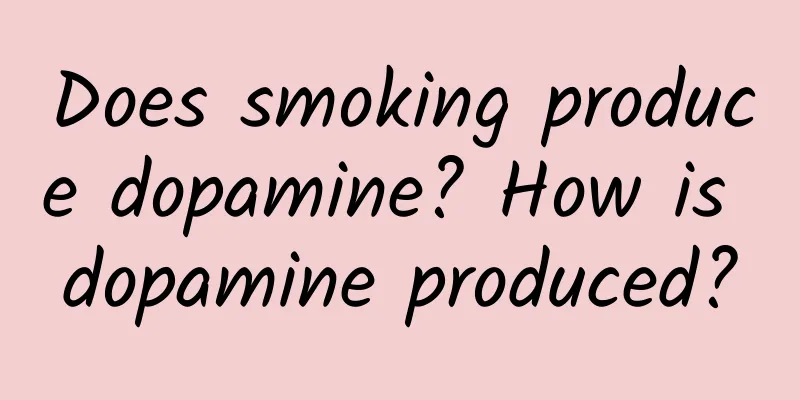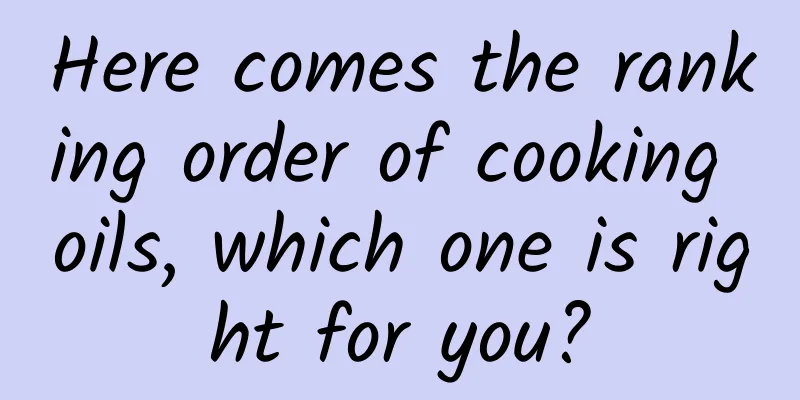Cold season: Please avoid encountering stroke

|
At present, stroke has become the third leading cause of death among Chinese residents, after malignant tumors and heart disease. According to estimates, there are about 2 million new stroke patients each year in China, and 1.5 million to 2 million people die from stroke each year. Especially since the beginning of winter this year, most areas in northern my country have been affected by cold waves, and the temperature has dropped drastically. The meteorological risk of inducing stroke is high. People with cardiovascular and cerebrovascular diseases should be extra careful to prevent it before it happens. Recently, the reporter asked Professor Sun Shentian, the first National Famous Chinese Medicine Practitioner, the National Academic Experience Inheritance Tutor of Senior Chinese Medicine Experts, and the Doctoral Supervisor of the Second Affiliated Hospital of Heilongjiang University of Chinese Medicine, to provide a popular science interpretation on the hot topic of cerebral stroke. What causes stroke emergencies? Stroke, scientifically known as cerebral infarction, is an acute cerebrovascular event. Professor Sun Shentian explained that cerebral infarction is a group of diseases caused by sudden rupture of blood vessels in the brain or blockage of blood vessels, which prevents blood from flowing into the brain, thus causing brain tissue damage. It is divided into ischemic stroke and hemorrhagic stroke. Whether it is ischemic stroke or hemorrhagic stroke, it will cause varying degrees of brain tissue damage, produce a variety of neuropsychiatric symptoms, and even endanger life in severe cases. Even after recovery, many people will still have sequelae that affect their normal work, study and life. As the "number one" enemy that endangers public health, people must be highly vigilant and pay attention to it, and curb the invasion of stroke from the source. Professor Sun Shentian concluded that from the perspective of traditional Chinese medicine, the cause of stroke is due to four major problems: deficiency of vital energy, improper diet, excessive emotions, and internal injuries caused by fatigue, which in turn lead to disorder of qi and blood, and promote the combination of wind, fire, phlegm, and blood stasis, causing blockage of brain veins or blood overflow outside the brain veins, and eventually evolving into cerebral stroke. The main clinical manifestations are sudden fainting, unconsciousness, crooked mouth and eyes, slurred speech, hemiplegia, limb weakness or inflexibility, unstable walking, severe headache, nausea and vomiting, impaired consciousness, etc. In mild cases, hemiplegia occurs, and the legs and feet are out of control. In severe cases, patients are wheelchair-bound for life. Which groups are most likely to be infected? Clinically, which group of people are more likely to suffer from stroke? Professor Sun introduced that, first of all, from the perspective of gender, the incidence and mortality of stroke among Chinese residents are higher in males than in females in both rural and urban areas; the average age of male and female stroke patients is 65.5 and 67.6 years old respectively. Sun Shentian explained that the reason for this difference may be closely related to the unhealthy lifestyle of males who prefer to smoke, drink alcohol, and eat too much fatty and sweet food. In the age group of 80 years and above, the incidence of stroke in females exceeds that of males. At the same time, the younger age of stroke patients is also showing a "rising tide lifts all boats" trend. According to a survey in Heilongjiang Province, the incidence of stroke among people under 40 years old is 5 to 6 times that of southern provinces and 2 to 3 times that of other northern provinces. This is because most young people today have the same environment and habits, such as fast pace of life, high mental pressure, fierce competition at work, often staying up late, using computers or mobile phones for a long time, often eating takeout or high-calorie fast food, having a habit of smoking and drinking, being generally overweight and lacking exercise. Professor Sun also introduced that according to the geographical distribution survey of cerebrovascular diseases in my country, except for the Tibet Autonomous Region, the incidence of stroke in most provinces is high in the north and low in the south, high in the east and low in the west. At the same time, experts and scholars found in their research on climate change and neurological diseases that the incidence of stroke has greatly increased under the impact of low temperatures; at the same time, the drastic changes in ambient temperature are closely related to the mortality rate of stroke. The mortality rate of stroke in areas with suitable temperatures is the lowest, while the mortality rate in cold areas is significantly increased. At the same time, the onset of stroke also has seasonal and time characteristics, that is, winter is much higher than summer, and the peak is from early morning to noon. Clinical treatment focuses on timeliness Clinically, the 6 hours after a stroke occurs (preferably within 4.5 hours) is known as the golden time for rescue. Within this rescue time window, patients must undergo surgery or thrombolytic therapy in a timely manner to avoid disability or even death. From Professor Sun's experience, acupuncture intervention in the early stages of stroke has a good therapeutic effect, especially for the rehabilitation of limb movement, language, swallowing and other functions. This is because acupuncture stimulation immediately after ischemia can significantly increase local cerebral blood flow and promote effective blood supply to the ischemic tissue to counteract brain damage caused by insufficient blood supply; at the same time, acupuncture during the reperfusion period after ischemia can help improve blood and oxygen supply to brain tissue, significantly reduce the area of cerebral infarction, and protect nerve function from further damage. It should be emphasized that for stroke, prevention is far more important than treatment. Professor Sun Shentian said that the risk factors for stroke are divided into two categories: interventionable and non-interventionable. The former include age, gender, race, genetics, etc., which are innate and cannot be changed; while the latter include hypertension, heart disease, diabetes, dyslipidemia, smoking, alcoholism, obesity, atherosclerosis, emotional stress, etc. Through human intervention, such problems are fully expected to be solved. Take hypertension as an example. As the cruelest invisible killer of cerebral hemorrhage and cerebral infarction, the higher the blood pressure, the greater the rate of stroke. Only by putting a "bridle" on the soaring blood pressure can we prevent the attack of stroke. The results of a clinical randomized controlled trial of systolic hypertension in elderly hypertensive patients in China showed that after 4 years of follow-up, the mortality rate of the antihypertensive treatment group was 58% lower than that of the placebo control group. Five cornerstones need to be firmly established Here, Professor Sun advises readers to pay attention to the "five cornerstones" of health, namely, a reasonable diet, moderate exercise, smoking cessation and alcohol restriction, psychological balance, and treatment of chronic diseases. Specifically, first of all, blood pressure should be monitored regularly, salt intake should be limited, and dietary fat content should be reduced; daily salt intake should be less than 6 grams. If too much sodium, fat, and cholesterol are consumed, it is very easy to bury the risk of atherosclerosis; secondly, hypertensive patients should take antihypertensive drugs for a long time to regulate blood pressure below 140/90 mmHg. Third, regular and moderate physical exercise is essential. Professor Sun Shentian believes that aerobic exercise can enhance heart function, increase cerebral blood flow, improve microcirculation, and maintain an ideal weight, which does not give stroke an opportunity. Fourth, quit smoking and limit alcohol consumption, and put an end to bad habits such as smoking and drinking. Professor Sun explained that smoking is a definite independent risk factor for ischemic stroke and subarachnoid hemorrhage. Studies have shown that the amount of alcohol consumed and the risk of ischemic stroke are in a J-shaped relationship. Drinking less can reduce the probability of stroke, while drinking excessively can cause a stroke. Finally, Professor Sun Shentian also warned that we should pay attention to keeping a happy and comfortable mood, actively adapt to the objective environment, and take positive measures to adjust negative emotions; at the same time, avoid fatigue, focus on strengthening physical fitness, balancing mentality, and nourishing positive energy to improve disease resistance and stress resistance. For those who have already developed the disease and have sequelae, do not rush for success, but focus on preventing the recurrence of stroke, so as to "not chase after the past" and avoid the re-invasion of stroke pathogenic factors. (Yi Xiaofeng Wang Yulin) Introduction to Professor Sun Shentian He is a winner of the National Outstanding Contribution Award for Traditional Chinese Medicine, the first National Famous TCM Doctor, a National Outstanding Teacher, the first batch of recipients of the State Council Special Allowance, a second-level professor, the first batch of Heilongjiang Province Famous TCM Doctors, and the first, second, third, fourth, fifth, and sixth batches of national senior TCM experts’ academic experience inheritance instructor. He is a nationally renowned TCM acupuncture expert, a doctoral supervisor, and one of the founders of the acupuncture discipline in Heilongjiang Province. He first came into contact with Chinese medicine when he was a teenager and officially entered the industry at the age of 21. His path to study is self-contained. He learns from the ancients but does not stick to the past. He draws on both Chinese and Western methods, absorbs the knowledge of many masters, and learns a lot before making a breakthrough. He specializes in his profession, values morality and practices diligently, and finally achieves success. He is good at using one needle therapy to treat pain, as well as acupuncture and the combination of Chinese and Western medicine to treat various neurological diseases and miscellaneous internal medicine diseases, including hemiplegia caused by stroke, aphasia, dementia, medullary paralysis, peripheral nerve injury, facial nerve paralysis and other cranial neuropathies, depression, insomnia, anosmia, deafness, etc. His efficacy is as fast as "the wind blowing the clouds". At the same time, he has achieved good results in the treatment of Parkinson's disease, cerebellar ataxia, essential tremor, myasthenia gravis, spastic torticollis, Meige syndrome, multiple sclerosis, multiple system atrophy, syringomyelia, myopathy muscular atrophy, epilepsy, dopamine-responsive dystonia syndrome and other difficult and complicated diseases by combining acupuncture and moxibustion with Chinese medicine. |
Recommend
What is considered fatigue for pregnant women?
Pregnant women are not allowed to engage in physi...
Tips for breast enhancement with Chinese medicine
Every female friend naturally likes to have a cur...
What causes low testosterone in women?
Many people don’t know much about low testosteron...
Six months pregnant, hard stomach and frequent urination
During pregnancy, many female friends feel that t...
How to distinguish the authenticity of star anise? What will happen if you put too much brine in star anise?
Star anise is a common ingredient in brine, with ...
Can pregnant women eat kiwi fruit every day?
In order to improve their physical health during ...
Mashable: Data explains iOS's "weight gain" process
As the iOS system becomes more and more powerful,...
smelly vaginal discharge
When our vagina secretes some unpleasant odors, i...
Can pregnant women play badminton?
We often see pregnant women who are obese, have b...
Is menstrual irregularity related to hormones?
Women must pay great attention to their menstrual...
What's in the Super Supreme Pizza? Ingredients for making pizza
Pizza originated in Italy. It is made of fermente...
I gave up on a premature baby at 27 weeks
After a woman becomes pregnant, she needs to take...
The best time for women to take calcium tablets
It is also very important for pregnant women to s...
What causes breast pain during puberty? Let you know the real situation
Some young girls may experience breast pain, whic...







![[Smart Farmers] When H1N1 influenza strikes, how should we respond?](/upload/images/67f1ba6128220.webp)

